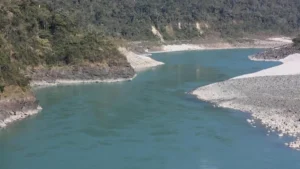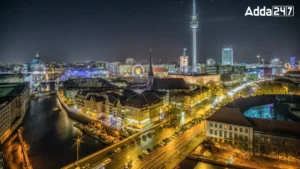India, renowned for its diverse landscapes and stunning natural beauty, is home to the country’s largest island chain—the Andaman and Nicobar Islands. Situated in the Bay of Bengal, this archipelago consists of over 500 islands, each offering its own unique allure and ecological importance. The largest island in this group is particularly noteworthy, serving as a haven for nature enthusiasts, adventure seekers, and those in search of a peaceful retreat. This article explores the remarkable features of the largest island and the enchanting beauty of the Andaman and Nicobar Islands.
Which is the Largest Island of India?
The Andaman and Nicobar Islands form the largest island group of India, spread over 8,249 square kilometers with Port Blair as its capital. These islands became a Union Territory on 1 November 1956 and are known for their cultural and historical importance. First visited by the English East India Company in 1789 and later administered by the British, the islands also witnessed the tragic 2004 tsunami. Today, they remain famous for their natural beauty, heritage, and strategic significance.
India’s Largest Island, Andaman and Nicobar Islands at a Glance
- Formation: 1 November 1956
- Capital: Port Blair
- Area: 8,249 square km
- Elevation: 568 m
- Population: 380,520
- Official Language: Hindi
Largest Island of India – Historical Significance
The islands have a rich history, having been visited by the English East India Company in 1789. Linked administratively by the British in 1872, they became a union territory of India in 1956. Notably, the Andamans gained global attention in 2004 when a devastating tsunami, triggered by an earthquake near Indonesia, severely damaged the islands.
Capital of Andaman and Nicobar Islands
Port Blair, situated on the eastern coast of South Andaman Island, serves as the capital of the Andaman & Nicobar Islands Union Territory. Recognized as the gateway to the unspoiled islands, Port Blair holds a key role in connecting visitors to the pristine beauty of the region. As of June 24, 2023, it continues to be the primary entry point for exploring the diverse landscapes and cultural heritage of the Andaman & Nicobar Islands.
Area of Biggest Island of India
The Andaman and Nicobar Islands cover an area of approximately 3,185 square miles (8,249 square km). Comprising over 300 islands, this union territory, located in the Bay of Bengal, boasts diverse topography, including submerged mountain ranges, volcanic activity, and coral-fringed coasts, making it a unique and ecologically significant region.
India’s Biggest Island – Map
The Andaman and Nicobar Islands, a union territory of India, are situated at the southeastern edge of the Bay of Bengal. Comprising two island groups, the Andamans and the Nicobars, they form an arc stretching southward for approximately 620 miles between Myanmar and Sumatra, Indonesia. The capital is Port Blair, located on South Andaman Island. The islands are known for their diverse topography, including submerged mountain ranges, volcanic activity, and coral-fringed coasts.
Geography of Andaman and Nicobar Islands
The Andaman Islands consist of over 300 islands, with North, Middle, and South Andaman being the main ones. The Nicobar Islands, to the south, include Car Nicobar, Camorta, Katchall, and Great Nicobar. The terrain is diverse, with the highest elevation at Saddle Peak on North Andaman. The islands are characterized by sandstone, limestone, and shale formations.
Flora and Fauna of Andaman and Nicobar Island
The islands boast dense tropical forests dominated by narra and Dipterocarpaceae trees. Mangrove swamps surround harbors, and diverse wildlife includes Andaman wild pigs, macaques, spotted deer, saltwater crocodiles, and over 200 bird species. Many flora and fauna species remain undocumented.
Climate of Andaman and Nicobar Islands, the Largest Island of India
The climate is tropical, moderated by sea breezes, with temperatures ranging from the low 70s F to mid-80s F throughout the year. The islands receive around 120 inches of annual rainfall, mainly from the southwest monsoon and tropical cyclones in October and November.
Population of Andaman and Nicobar Islands
While the territory consists of hundreds of islands, only a few are inhabited. The majority of the population comprises immigrants from South Asia, speaking languages like Hindi and Bengali. Indigenous groups, like the Andamanese and Nicobarese, have historically inhabited the islands, with distinct languages and cultural practices. The population is predominantly Hindu, with Christian and Muslim minorities.
Andaman and Nicobar Islands – Economy
Port Blair is the major town, hosting over one-fourth of the population. Agriculture, including rice, coconuts, and betel, is the primary occupation. The islands have a small forestry sector, and manufacturing activities include wood products, processed foods, and garments. Tourism is a growing industry, attracting visitors with historical sites like the Andaman Cellular Jail and the natural beauty of parks and sanctuaries.
Biggest Island in India – Education and Health
Educational institutions are limited, but literacy rates surpass the national average. Basic healthcare is provided for free, with hospitals in populated areas and an extensive network of health-care subcenters. Malaria has been a historical concern, and efforts have been made to combat it. The islands participate in national health and education programs.
Administrative Framework – Andaman and Nicobar Islands
The Andaman and Nicobar Islands are administered by the central government through a lieutenant governor and a Council of Ministers. The territory has its own legislature with elected members.




 Which Glacier is the Source of the Brahm...
Which Glacier is the Source of the Brahm...
 Which City of Germany is Known as the Gr...
Which City of Germany is Known as the Gr...
 Which Peak is Known as the Five Treasure...
Which Peak is Known as the Five Treasure...







